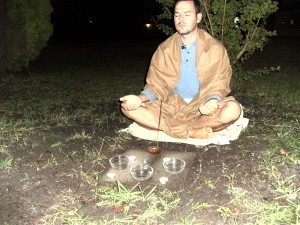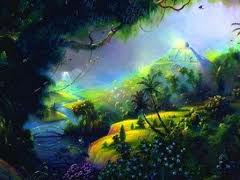Within many traditions, holidays and special dates often commemorate an event or a person. For example, Vesakha (Buddha Day) celebrates the life and actions of Lord Buddha. Christmas recognizes the birth of Jesus Christ (even though it is generally agreed that December 25th is not his actual birthday). Pesach (Passover) honors God’s delivery of the Jews from Egypt. The Wiccans (and many Pagans) however, set their holy days according to changes in the earth and the path of the stars.
Called “Sabbats,” each of the eight annual Sabbats follows the “Wheel of the Year,” a Neopagan term which describes the earth’s natural cycles. Since the concept of time within many Pagan traditions is cyclical, these Sabbats mark times dealing with growth, death, and renewal. There are eight such Sabbats in all, each of which are separated fairly evenly across the year.

In addition to the eight major Sabbats, Wiccans also have “Esbats,” meetings which occur for various reasons yet usually fall on full or new moons.
Here is a breif detail about the eight Sabbats which constitute the Wheel of the Year. Please note: Because each Pagan tradition varies, no two may celebrate in the same way. I will try and provide a general definition of the day and encourage you to search further into celebration details regarding specific traditions.
Samhain: Widely considered the most important of the Sabbats, Samhain is the beginning of the New Year for Wiccans and many Pagans alike. Celebrated in the Northern Hemisphere on October 31st at sundown, it is believed to be the time when the veil between our world and that of the afterlife is thinnest. For this reason, Wiccans and Pagans take this time to honor their ancestors and those now in the spirit world.
Yule: This Sabbat celebrates the winter solstice (Dec. 19-23) and the rebirth of the God with the coming sun. Here, celebrations can be held in private or in coven settings. This is the Pagan holiday early Christians adopted as the birth of Jesus in order to better assimilate Pagans into the new Christian faith due to the analogous use of the rising sun.
Imbolc: Here we celebrate fire and light and the Sabbat itself is closely associated with the Celtic hearth goddess, Brighid. This Sabbat is held around February 1st.
Ostara: The vernal (spring) equinox, this time celebrates the coming spring and renewal of life. In some traditions, we celebrate the gaining strength of the God from his winter birth and the rejoining of the God and Goddess to form earth’s renewed life. March 19-23.
Beltane: The Beltane Sabbat celebrates fertility and life. In the Northern Hemisphere, this Sabbat falls on May 1st. Rituals for this day typically involve bonfires, maypole dancing, and in some cases a “High Beltane” with a ritual union between the God and Goddess.
Litha: Summer solstice. Litha celebrates the longest day of the year when the sun shines the longest. June 19-23. It is a time to honor the sun and take in some solar energy.
Lammas/Lughnasadh: At this time we celebrate the first of the three autumn harvest festivals and honors the time of the first harvest. Traditions vary regarding rituals and events, however one involves baking a cake in the form of the God, offering thanks for the harvest, and eating the cake as a symbolic sacrifice (the God and his cycles represent life and death). Early Wiccan sources called this time “August Eve.” Early August.
Mabon: This Sabbat honors the second harvest and initiates a time of gathering the fruits of the earth and sharing the blessings of the Goddess and God among our fellow Man. Celebrations occur during the Autumn Equinox, around September 21-24.
So there is a list of the eight major Sabbats honored by most Wiccans and many Pagans. As we see, each time honors a change in the earth and how it influences our daily living. In this way, these celebrations bring awareness to our relationship with nature. Everything indeed has a time and a season, including ourselves.
What are some of your traditions around the changes of the earth? Do you honor the Sabbats from the Wheel of the Year? Do you have a unique way of recognizing the phases of the seasons?

